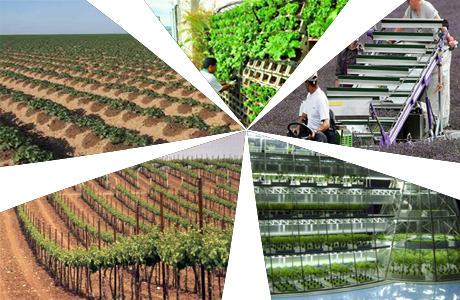|
Innovative Farming
By Mohammad Hussain Khan
 Progressive
growers like Haji Nadeem Shah eagerly adopt innovative ways
of farming. Recently, he tried a relatively new method of
cultivating wheat, sunflower and cotton on 14 acres. Progressive
growers like Haji Nadeem Shah eagerly adopt innovative ways
of farming. Recently, he tried a relatively new method of
cultivating wheat, sunflower and cotton on 14 acres.
The technique is called permanent raised beds (PRBs). Facing
a shortage of irrigation water as his farm is located at the
tail-end region of the canal, he opted for PRB and drip
irrigation.
PRB-based cultivation
helped Shah in conserving water and getting better
productivity of all three crops.
He proposes that farmers
in Sindh consider this option by looking at its cost and
benefits. Growers don’t need to prepare land, which is
time-consuming and involves considerable expenses before
every crop sowing.
The growth of weeds on raised beds can be tackled by using
weedicide. Otherwise, weeds and left over roots of the
preceding crop can serve as a source of organic fertiliser.
Time is crucial for getting good crop yields, and late
sowing compromises per acre productivity.
With PRBs in place, farmers can have timely sowing, as they
don’t have to waste any time in preparing the land.
Unfortunately, Nadeem Shah had to abandon PRBs after three
years, as he could not bear the cost of electricity bills
for operating the tube wells.
PRB improves soil management
and helps conserve water consumption by 30-40pc. In this
technique, 3-4ft wide trapezoidal beds are formed amidst
furrows. They are kept intact for a few years to grow
multiple numbers of crops.
PRBs do not need deep
tillage. A particular portion of the raised beds is somewhat
loosened prior to the sowing of the seed, with minimal
disturbance to roots of the preceding crop.
Resultantly, microorganisms of roots and soil are retained
to promote biological activity, and for roots’ health and
organic matter. Greater air and water movement are achieved
for better productivity and irrigation efficiency.
PRBs absorb water released in
furrows. On the other hand, in the raised bed (RB)
technique, the beds are demolished and then formed every
year.
It was around mid-2000 when, according to Sindh agriculture
engineering Director-General Agha Zafarullah Durrani, the
federal government had launched the PRB project with
Australian assistance.
Trials were also conducted in
Sanghar, Mirpurkhas and Jamshoro districts. It yielded good
results for water conservation and crop productivity, says
DG Durrani.
A researcher at the Pakistan
Council of Research in Water Resources (PCRWR), Ahmed
Zeeshan Bhatti, points out that a crop ideally grows if it
gets 50pc each of water and air in the root zone.
In flood irrigation,
particularly in low-lying areas, excessive seepages lead to
an imbalance in this ideal air-to-water ratio. “PRBs and RBs
are effective ways for keeping this ratio within the ideal
range,” he comments.
PRBs, however, have some limitations. The most important is
the build-up of excessive salt concentration over time in
the beds due to capillary action of water as it
evapotranspires, leaving the salts behind.
This can be avoided by
integrating PRBs with a drip or sprinkler irrigation system,
which requires less water but affects intermittent leaching
of salts.
It has been proven by
research trials that PRBs ensure water conservation ranging
between 30-40pc, and are preferred over RBs where canal
water supplies are normal.
RBs are more suitable for salinity-hit lands than PRBs.
These are to be formed afresh for every crop to keep the
salts disturbed and scattered. Hence, their concentration in
the root zone is blocked.
But the formation of RBs is
fuel-expensive. In waterlogged and salinity-hit land, raised
beds widen the distance between subsoil water and the
plant’s roots to minimise salt impacts, Bhatti explains.
“To me, PRB technology suits Sindh, where issues of water
scarcity and waterlogging are serious.
These are triggered by
over-irrigation of lands and force the government to invest
millions in the drainage system’s maintenance to keep the
groundwater under control.
But PRBs’ success is subject
to integration with high efficiency irrigation system,” he
says.
Another soil management practice to make PRBs more suitable
is the sowing of plants on the edges of the beds, sparing
the middle-bed surface where the salts accumulate, he says.
But growers are reluctant to opt for PRBs. Either they are
not exposed to it, or are afraid of the initial capital cost
of the required machinery and implements.
The government may consider
giving subsidy on such equipments to promote PRBs, as it is
subsidising tractors for farmers. According to DG Durrani,
the machinery’s cost for PRBs is not that huge.
August 2014
Courtesy:
Dawn News |